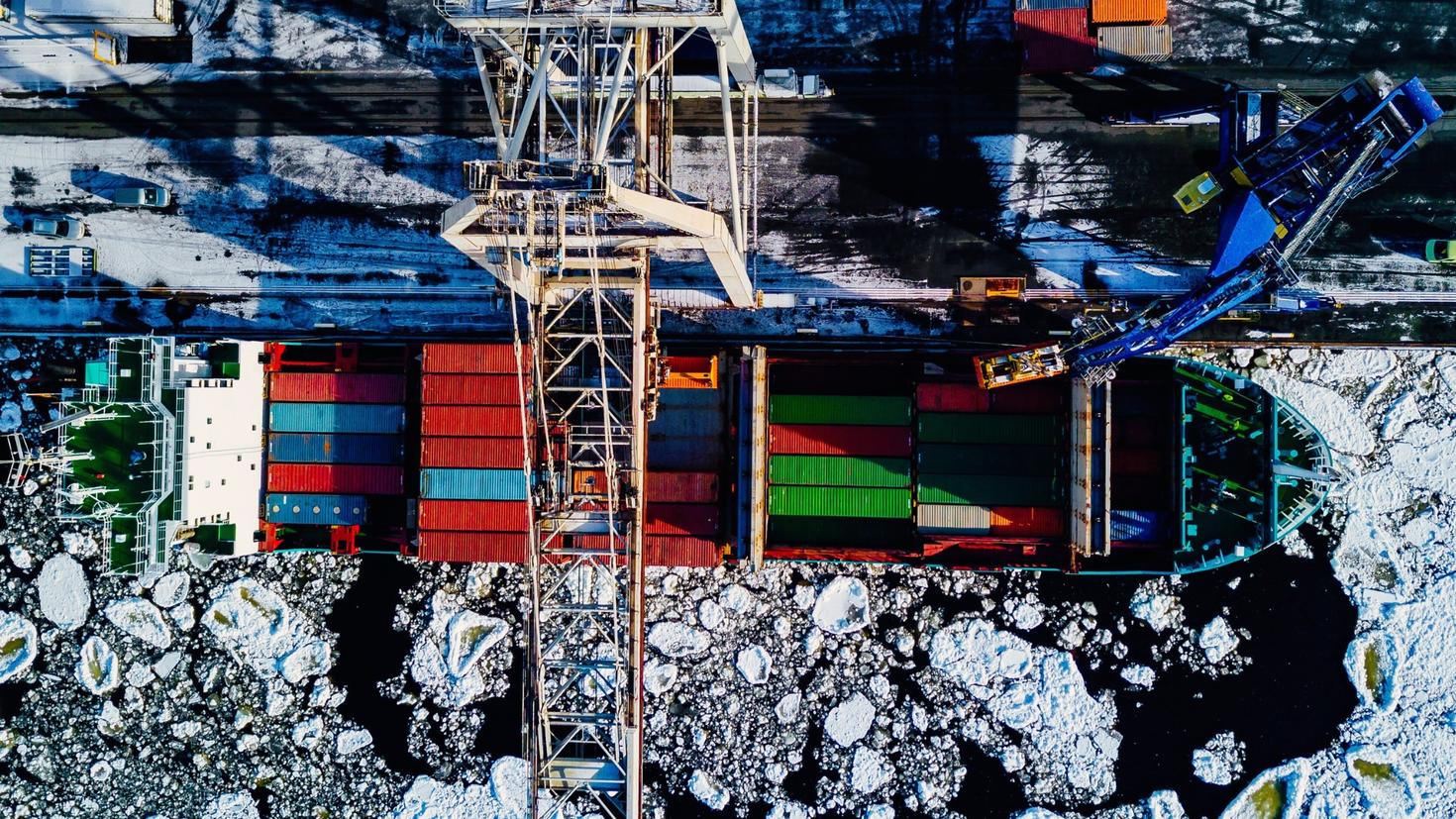Arctic shipping in Canada has more than tripled since 1990, and is expected to increase exponentially as climate change causes more sea ice to melt, making waterways easier to navigate.
“Melting sea ice has been extending the shipping seasons by about two weeks per decade,” says Jackie Dawson, Canada Research Chair in Human and Policy Dimensions of Climate Change, and recipient of a Dorothy Killam Research Fellowship.
“That could be good for economic development, but more ship traffic can also mean bringing in potential invasive species. It means more noise impacting marine mammals, like bowhead whales and narwhals. It’s also having major implications for Inuit and Indigenous communities that live in the region.”
Through her new research project, Inuit Qaujisrnirmut Pilirijjutit (Knowledge) on Artic Shipping Risks, Dawson will assess the impact of increased ship traffic on the surrounding marine mammal and human populations, predict future conditions and identify risk mitigation strategies.
The Faculty of Arts professor will work closely with a team of local Inuit researchers and decision-makers, industry partners and academic collaborators from other Canadian universities.

“The only way to solve a major problem like climate change is to bring together diverse people, diverse perspectives, diverse cultures and diverse sciences. That’s where the magic is.”
Professor Jackie Dawson
— Killam Fellow and CRC in Environment, Society & Policy, Faculty of Arts, University of Ottawa
Building knowledge about governance
Recognized for positioning Canada as a world leader in Arctic shipping governance, Dawson has been developing research projects with international, national and local Inuit community organizations for nearly 10 years, responding directly to evolving and locally-identified research needs.
In 2015, Dawson’s Arctic Corridor and Northern Voices project developed a shipping map of Arctic Canada, using culturally-significant marine areas identified by Inuit. This helped find corridors or passageways that minimized the impact of ship traffic on local communities and the environment.
Building on this, Dawson’s next project focused on identifying and evaluating governance strategies for managing these low-impact corridors, as well as the opportunities and challenges presented by increased ship traffic.
As a new Killam Fellow, Dawson will soon take her research a step further by identifying and assessing strategies for sustainable and self-determined risk reduction across four research streams:
- Future traffic routes: Dawson will compare historical ship traffic with changing sea ice conditions to predict navigation routes and conditions.
- Underwater noise pollution: Using the predicted routes, she will study the propagation of ship noise and how it might affect marine mammals.
- Contaminants: Dawson will measure the impact of environmental pollutants from ships, including fuel oil and ship hull paint, by comparing water samples from waterways with historically high and low ship traffic, and by examining toxin levels in seabird eggs.
- Invasive species: She will study the pros and cons of anti-fouling paints, which are used to coat the underside of ships to prevent organisms from sticking to them, to inform best practices in keeping invasive species at bay.
The research findings will support decision-makers and governments, communities across Nunavut and Inuit Nunangat (meaning “the place where Inuit live”) and the local marine environment and populations. It will support Inuit Nunangat’s coastal and marine management and marine infrastructure development, and encourage greater collaboration among marine industries, communities and academia.
“Most Canadians don’t realize that 40% of our country’s landmass is considered Arctic and that it’s one of the most vulnerable places in the world to climate change,” says Dawson. “We have an extreme responsibility as scientists and as a country to make sure that we understand the impacts of increased shipping traffic on the fragile ecosystems of Arctic Canada.”

Collaboration and Indigenous leadership
Dawson plans to combine Western scientific techniques with an Indigenous research framework known as aajiiqatigiingniq, which is based on the inclusion and equal value of Inuit knowledge.
In practical terms, this means using two sampling approaches: community-based sampling led by Inuit research associates and Inuit youth in regions of Nunavut with high or low levels of shipping traffic, and a comparison of the community-based samples to those collected on board a Coast Guard vessel and a cruise ship. Once model results are developed, they will also be validated through discussions with Inuit knowledge holders.
As a nation born from Indigenous peoples, Dawson says Canada should prioritize Indigenous leadership in science and data sovereignty. For her, “the infusion of Indigenous knowledge into Western techniques is the natural way to progress in science and is necessary to find solutions for modern day society.”
Dawson adds: “I think the only way to solve a major problem like climate change is to bring together diverse people, diverse perspectives, diverse cultures and diverse sciences. That’s where the magic is, at the intersections of diversity.”
